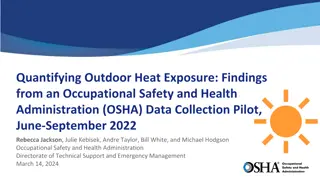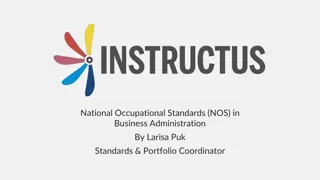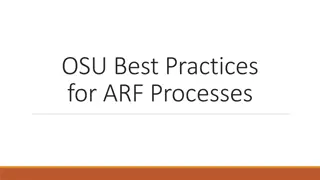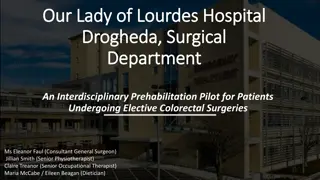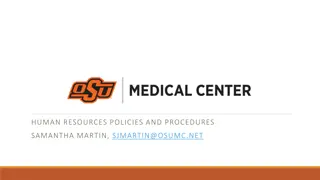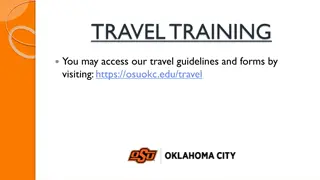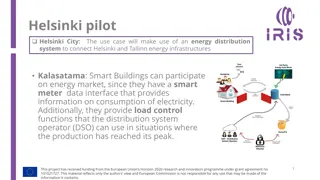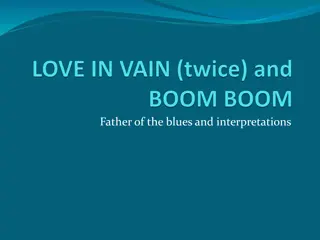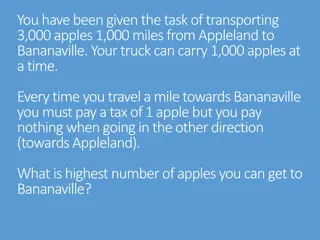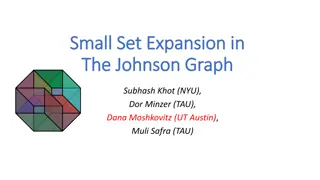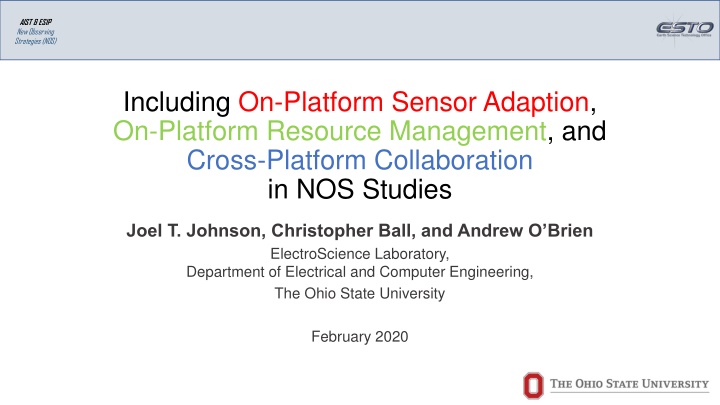
New Observing Strategies Project on Adaptive Sensor Networks
"Explore the AIST & ESIP New Observing Strategies (NOS) project focusing on adaptive sensor networks for Earth observation missions. Learn about on-platform sensor adaptation, resource management, and cross-platform collaboration in NOS studies."
Download Presentation

Please find below an Image/Link to download the presentation.
The content on the website is provided AS IS for your information and personal use only. It may not be sold, licensed, or shared on other websites without obtaining consent from the author. If you encounter any issues during the download, it is possible that the publisher has removed the file from their server.
You are allowed to download the files provided on this website for personal or commercial use, subject to the condition that they are used lawfully. All files are the property of their respective owners.
The content on the website is provided AS IS for your information and personal use only. It may not be sold, licensed, or shared on other websites without obtaining consent from the author.
E N D
Presentation Transcript
AIST & ESIP New Observing Strategies (NOS) Including On-Platform Sensor Adaption, On-Platform Resource Management, and Cross-Platform Collaboration in NOS Studies Joel T. Johnson, Christopher Ball, and Andrew O Brien ElectroScience Laboratory, Department of Electrical and Computer Engineering, The Ohio State University February 2020
AIST & ESIP New Observing Strategies (NOS) Project Objective Future Earth-observation missions will involve intelligent networks of adaptive sensors that coordinate their observations to optimize performance Some of these sensors will operate on resource constrained platforms (i.e. CubeSats) NOS simulations and studies need to include the capability to model on-platform sensor adaptation, on-platform resource management, and cross-platform communication/ collaboration
AIST & ESIP New Observing Strategies (NOS) Project Technologies The Simulation Toolset For Adaptive Remote Sensing (STARS) AIST-16 project at OSU developed initial software components for simulating these capabilities with a focus on adaptive cloud radar systems Software components can be incorporated/adapted to be part of NOS simulations Capabilities considered in 2016 AIST: Adapting the radar pulse repetition frequency in response to observed scene to optimize unambiguous range/Doppler sensing properties Interrupting radar integration period when scene is assessed as not scientifically useful (saving platform energy) Managing sensor operations based on predicted platform power budget over future orbit and assigned science relevance of a given location Sharing information among multiple satellites via an optimized communication network path
AIST & ESIP New Observing Strategies (NOS) Project Relation to NOS Concept Proposed participation would address the modeling and inclusion of adaptive sensor operations, on-board resource management, and collaborative communication network planning Including these already available sensor capabilities in NOS simulations in crucial to ensure the full range of possibilities is explored in NOS studies




